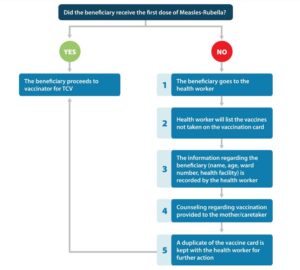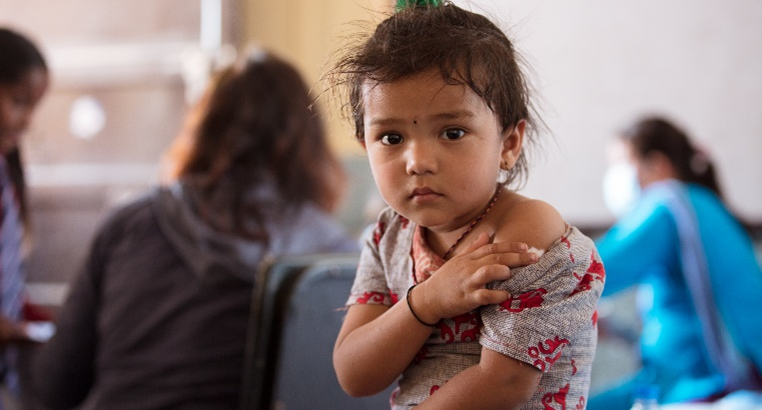Nepal bears one of the most significant global burdens of typhoid, with approximately 82,000 cases resulting in 900 deaths annually. Most of these cases afflict children younger than age 15 years. Nepal also grapples with drug-resistant typhoid caused by misuse of antibiotics and inadequate infection control measures.
In April 2022, Nepal launched a national campaign to introduce typhoid conjugate vaccines (TCV), which successfully vaccinated more than 7 million children ages 15 months to 14 years old. The introduction of TCV presented an opportunity to also identify and reach zero-dose (ZD) and under-immunized children, bringing them up-to-date on routine immunizations. ZD is defined as a child younger than 2 years old who has not received any routine vaccination. For operational purposes, Gavi defines zero-dose children as those who lack the first dose of diphtheria-tetanus-pertussis containing vaccine (DTP1). Under-immunized are those children missing the third dose of DTP.
The outreach strategies and lessons learned through introduction of TCV in Nepal provide a roadmap for others working to reach ZD children and missed communities. Gavi’s Zero-Dose Learning Hub (ZDLH) documented lessons learned from the TCV campaign through a series of key informant interviews with stakeholders at different levels of the health system.
Approach to reaching zero-dose and under-immunized children
Identifying where ZD children live is the first step to reaching them with life-saving vaccines. In Nepal, ZD children typically reside within urban slums and remote areas. Communities living in urban slums and remote areas experience challenges accessing safe water and sanitation, poor hygiene, and limited access to the primary healthcare system, all of which contribute to the spread of typhoid.
Prior to the campaign, health care workers were trained to identify ZD children. Throughout the campaign, vaccination cards were used to identify children who had missed immunizations. The vaccination cards featured a detachable section – retained at the healthcare facility – for tracking children with missed doses. At the time of TCV administration, health care workers recorded incomplete immunizations on the vaccination card for each child and offered guidance to caregivers, advising them to visit the nearest health facility to access missed vaccines.
The flowchart illustrates how the vaccination card was used to identify ZD children:

TCVs and improved water, sanitation, and hygiene
Nepal’s TCV campaign raised awareness of the need for routine immunization and contributed to identifying and immunizing ZD and under-immunized children. Because ZD children often live in areas lacking adequate access to water, sanitation, and hygiene (WASH), improvements in WASH infrastructure – in combination with routine immunizations – are need to ensure all children are protected from typhoid. The ZDLH’s findings are packaged in a case study, available for download on ZDLH.Gavi.Org.
Funded by Gavi, the Zero-Dose Learning Hub (ZDLH) serves as the global learning partner and is led by John Snow, Inc. (JSI) Research & Training Institute, Inc. JSI with two consortium partners, The Geneva Learning Foundation and the Indian Institute of Health Management Research. Together, the consortium enables sharing and learning across four Country Learning Hubs in Bangladesh, Mali, Nigeria, and Uganda to advance the uptake of evidence by synthesizing and disseminating key learnings. The ZDLH also focuses on improving immunization equity and reducing the number of zero-dose and under-immunized children globally by facilitating high-quality evidence generation and uptake.
Visit ZDLH.gavi.org for more information!
Cover Photo: Child after receiving typhoid conjugate vaccine (TCV) in Nepal’s introduction campaign. Credit: Rocky Prajapati, PATH.



